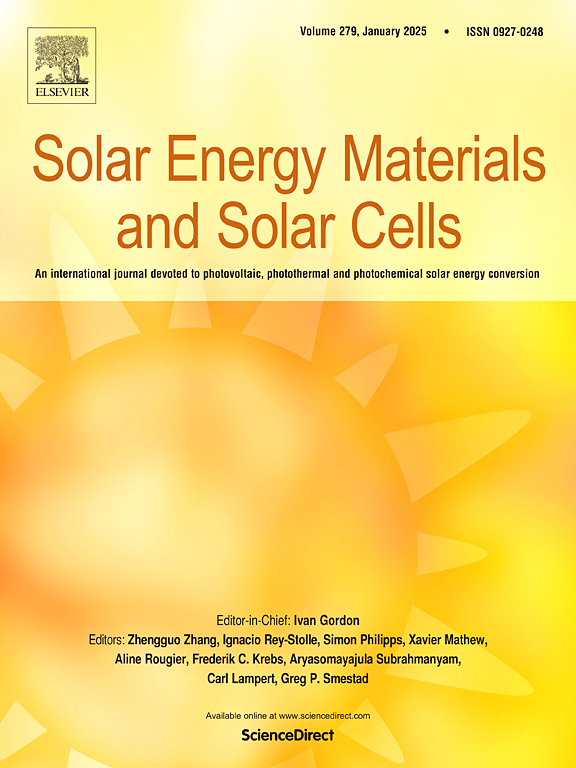How the selenium is affecting the physical and electrical properties of ultra-thin CdSeTe/CdTe solar cells
IF 6.3
2区 材料科学
Q2 ENERGY & FUELS
引用次数: 0
Abstract
The incorporation of selenium into the CdTe has recently enhanced the performance of the solar cells to 23.1 %. The narrower band gap of the CdSeTe/CdTe absorber boosts the short-circuit current density; also, Se introduction increases the carrier's lifetime. Optimizing CdSexTe1-x band-grading is crucial for achieving high-performance CdTe photovoltaics. Another current goal is to reduce the thickness of the absorber to further reduce production costs and environmental impact. Thus, studying the effects of Se introduction in ultra-thin CdTe absorbers is essential. To investigate Se concentration's impact on ultra-thin CdTe, we fabricated CdSeTe/CdTe devices with an absorber thickness of 0.8 μm by depositing different CdSe/CdTe ratios. Our 0.8 μm thick cells have currently achieved an efficiency of 12.8 %, but most important this study shows that Se introduction in ultra-thin CdTe results in structural properties different from those of thicker absorbers, impacting the device performance.
硒是如何影响超薄CdSeTe/CdTe太阳能电池的物理和电学性能的
硒与碲化镉的结合使太阳能电池的性能提高了23.1%。CdSeTe/CdTe吸收体的窄带隙提高了短路电流密度;此外,硒的引入提高了载体的寿命。优化CdSexTe1-x波段分级对于实现高性能CdTe光伏至关重要。目前的另一个目标是减少吸收器的厚度,以进一步降低生产成本和对环境的影响。因此,研究硒引入对超薄碲化镉吸收体的影响是必要的。为了研究硒浓度对超薄CdTe的影响,我们通过沉积不同比例的CdSe/CdTe制备了吸收层厚度为0.8 μm的CdSeTe/CdTe器件。我们0.8 μm厚的电池目前已经达到了12.8%的效率,但最重要的是,本研究表明,在超薄CdTe中引入Se会导致与较厚吸收体不同的结构特性,从而影响器件性能。
本文章由计算机程序翻译,如有差异,请以英文原文为准。
求助全文
约1分钟内获得全文
求助全文
来源期刊

Solar Energy Materials and Solar Cells
工程技术-材料科学:综合
CiteScore
12.60
自引率
11.60%
发文量
513
审稿时长
47 days
期刊介绍:
Solar Energy Materials & Solar Cells is intended as a vehicle for the dissemination of research results on materials science and technology related to photovoltaic, photothermal and photoelectrochemical solar energy conversion. Materials science is taken in the broadest possible sense and encompasses physics, chemistry, optics, materials fabrication and analysis for all types of materials.
 求助内容:
求助内容: 应助结果提醒方式:
应助结果提醒方式:


